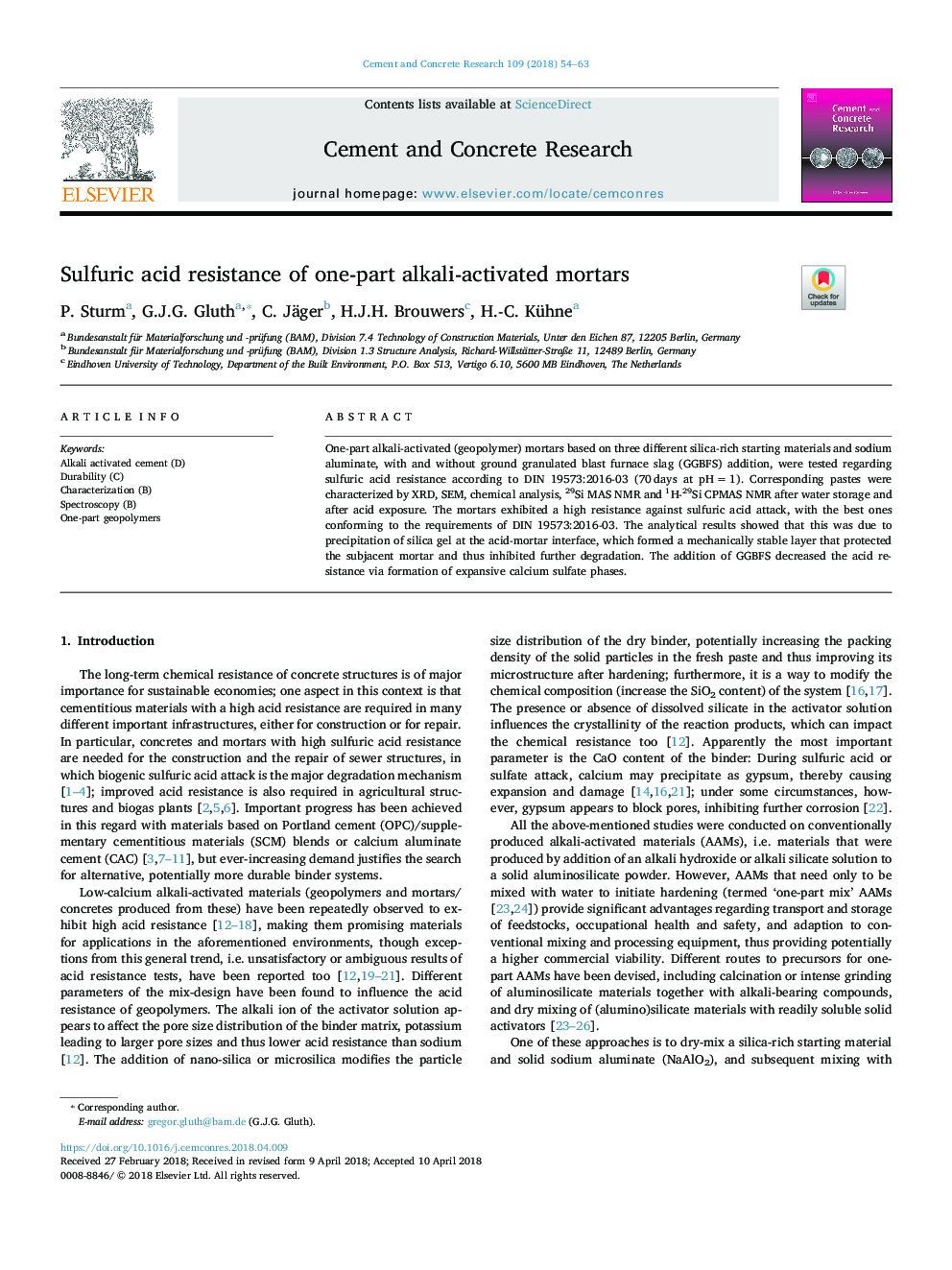| Article ID | Journal | Published Year | Pages | File Type |
|---|---|---|---|---|
| 7884563 | Cement and Concrete Research | 2018 | 10 Pages |
Abstract
One-part alkali-activated (geopolymer) mortars based on three different silica-rich starting materials and sodium aluminate, with and without ground granulated blast furnace slag (GGBFS) addition, were tested regarding sulfuric acid resistance according to DIN 19573:2016-03 (70â¯days at pHâ¯=â¯1). Corresponding pastes were characterized by XRD, SEM, chemical analysis, 29Si MAS NMR and 1H-29Si CPMAS NMR after water storage and after acid exposure. The mortars exhibited a high resistance against sulfuric acid attack, with the best ones conforming to the requirements of DIN 19573:2016-03. The analytical results showed that this was due to precipitation of silica gel at the acid-mortar interface, which formed a mechanically stable layer that protected the subjacent mortar and thus inhibited further degradation. The addition of GGBFS decreased the acid resistance via formation of expansive calcium sulfate phases.
Related Topics
Physical Sciences and Engineering
Engineering
Industrial and Manufacturing Engineering
Authors
P. Sturm, G.J.G. Gluth, C. Jäger, H.J.H. Brouwers, H.-C. Kühne,
